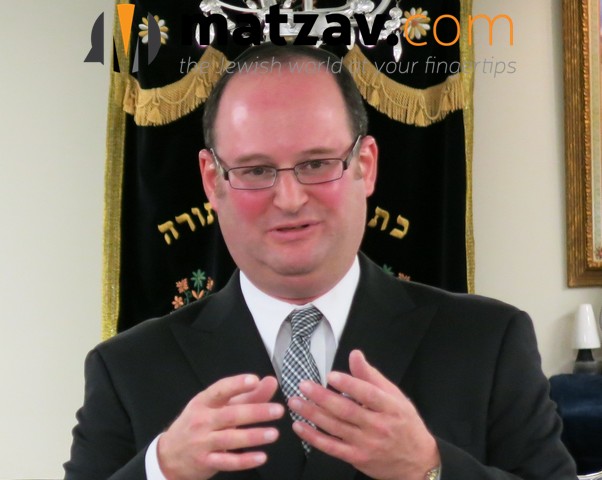
By Rabbi Avrohom Gordimer
Parshas Beha’alosecha commences with the mitzvah of the Menorah. Although the connection between the mitzvah of the Menorah and the end of the previous parshah has been addressed by Chazal and the Meforshim (Commentaries), the connection between the Menorah and the balance of Parshas B’ha’alosecha requires investigation. What is the relationship between the mitzvah of the Menorah and the events which appear in the rest of our parshah?
Parshas Beha’alosecha is comprised of two distinct sections. The first section is one of idyllic allegiance to Hashem: induction of the Levi’im into Avodah, offering Korban Pesach, people who could not bring a Korban Pesach requesting a way to make it up (Pesach Sheni), and B’nei Yisroel marching in perfect formation with the Aron. In stark distinction, the second section of the parshah consists of the audacious and rebellious complaints and ensuing punishment at Taveirah and Kivros Ha-Ta’avah, followed by the episode of Aharon and Miriam speaking against Moshe Rabbeinu. What a contrast between the first and second sections of the same parshah!
Where did things sour? How could paradise so quickly turn into Gehinnom?
This is where the message of the Menorah connects the dots.
When one is elevated to a higher position, or is endowed with a special status, there are two ways that this event can be viewed. It can be viewed as a heightened degree of responsibility, reflective of more important and sublime obligations, or it can be viewed as becoming privileged, with the higher position or new status indicating greater entitlement. We see these two alternatives at play all the time in politics, as the difference between public servants and corrupt opportunists is regularly to be noted among government officials.
The first section of Parshas Beha’alosecha depicts B’nei Yisroel in the earlier mode described above, as people who appreciate their heightened degree of responsibility and special obligations after having just been elevated to a higher position and endowed with a special status. In this motif, B’nei Yisroel were enthusiastic and committed to fulfill their obligations and earn Hashem’s favor. Their allegiance and devotion to their lofty new charge was inspiring and exemplary.
However, the second section of Parshas Beha’alosecha depicts B’nei Yisroel in the latter mode, as people who view their exalted status in terms of entitlement. Those who resorted to complaint and rebellion became jaded, uninspired and greedy, wholly unappreciative of the true significance of their chosenness. This sentiment is expressed by Rashi, citing the Sifrei, concering Moshe’s words to the complainers, “… since you despised Hashem, Who is in your midst, and you cried out before Him, saying ‘Why is it that we left Mitzyrayim?’” (Bamidbar 11:20) Rashi explains that had Hashem not placed His Shechinah among the people, they would not have had the audacity to hurl such insults. In other words, the people viewed their elite status as a form of empowerment and entitlement rather than as a precious privilege of service. They therefore felt able to make irrational demands and perceived that they were in a position to lash out when those demands were not met.
The Menorah’s message is one of Hashra’as Ha-Shechinah, of Hashem’s Presence being manifest among B’nei Yisroel. The uniqueness of the Jewish People is a function of Hashem’s Presence being in our midst, and is not due to an elite or superior status on our part. This crucial vision, of the specialness of being Jewish reflecting the Shechinah residing in our midst, is a humbling notion, and it was the source of the inspiration, love and devotion to Hashem which B’nei Yisroel demonstrated in the first section of our parshah. When this vision of the Shechinah being the driving and central force is overlooked, and we take credit for our acts and confer upon ourselves a false sense of nobility or superiority, we forfeit our right to our specialness.
The concept of Hashra’as Ha-Shechinah serving as the defining factor for our unique role is indicated by the Torah’s presentation of the mitzvah of the Menorah at the beginning of our parshah. This is why the parshah starts with the Menorah.
The profound message Menorah is the introduction and undercurrent to all that transpires in Parshas Beha’alosecha, and may it forever be at the forefront of our minds and at the center of our hearts.











